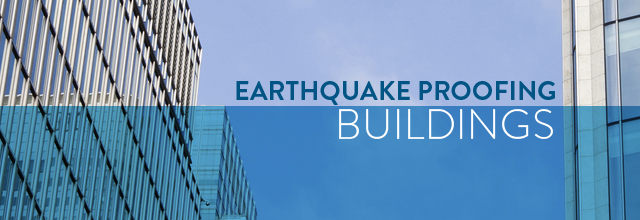Buildings That Rock and Roll

While that may seem an odd description to apply to a building, it is actually quite appropriate for San Francisco’s General Hospital as designers, engineers and workers of the NECA-IBEW team complete major structural upgrades. These upgrades will allow the entire building to withstand an earthquake of of up to 8.2 on the Richter Scale.
To give you an idea of what that means, imagine a quake across a large region in which buildings collapse, with ground shaking violently enough to throw large objects into the air. By way of compaison, the Loma Prieta Earthquake that struck the Bay Area in 1989 registered 6.9 – approximately ten magnitudes less than what the renovated San Francisco General Hospital will be able to withstand.
The technical name for these building upgrades is “seismic retrofitting.” Essentially, the building will be resting on top of what IBEW foreman Tom Thorson describes as a “big bowl of ball bearings.” The entire system will allow the structure to move laterally in any direction by thirty inches, and vertically by as much as five inches without incurring major damage.
The technology is cutting edge, though the basic concepts have been around for several centuries. Ancient structures such as a Persian tomb erected by King Cyrus the Great in 550 B.C. and the city of Machu Picchu in the earthquake-prone highlands of Peru were constructed without mortar in such a way as to allow the stones to slide back and forth. The current upgrades being made to San Francisco General brings these concepts into the 21st Century, making the building one of the safest structures in the Bay Area.
Of course, doing any upgrades or renovations to a hospital involves unique challenges. Injuries and sicknesses do not stop because of contractors on the job. Additionally, there are many more pipes, wiring systems, conduits and other systems to take into consideration while doing retrofits of this type, and they must all continue to operate as if people’s lives depend on them – which they do. Despite the challenges and difficulties of the job however, NECA/IBEW team members are rising to the challenge. One journeywoman, Kimber Oswald, said, “It doesn’t look like ideal working conditions, but it’s really fun…because I get to build something…every day is a new environment…a new challenge.”
She adds, “I take pride in the work that I do, because this will be here for the next…however long…and I’m proud that I’m the one who installed it.”
And without a doubt, future patients who will never know Kimber Oswald’s name will be deeply grateful to her and the NECA/IBEW team when the next big quake happens.

